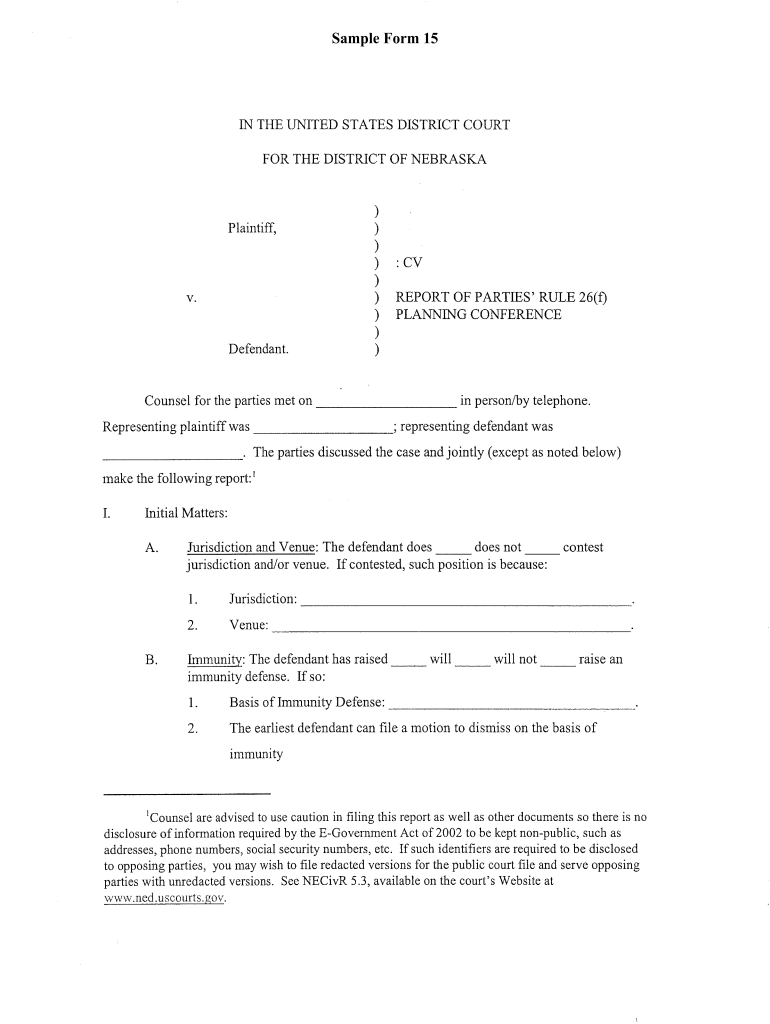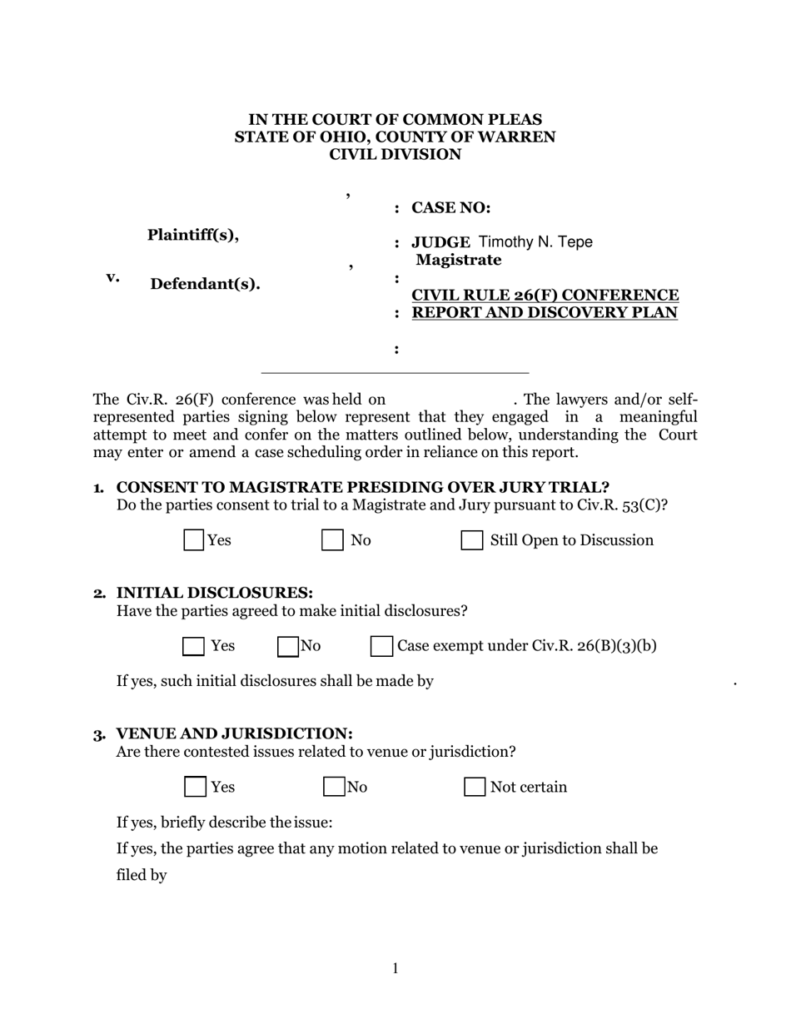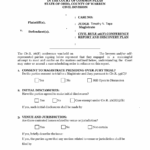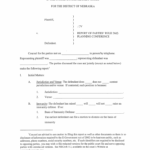When it comes to civil litigation in the United States, Rule 26 of the Federal Rules of Civil Procedure plays a crucial role in the discovery process. Rule 26 F specifically pertains to the discovery plan that parties must develop and submit to the court early in the litigation process. This plan outlines the scope and timing of the discovery process, helping to streamline and organize the exchange of information between parties.
One key component of the Rule 26 F discovery plan is the Discovery Plan Form. This form is used to document the agreement reached between parties regarding the scope of discovery, the timing of discovery deadlines, and any other specific details related to the exchange of information. By completing and filing this form with the court, parties can ensure that everyone is on the same page and that the discovery process proceeds smoothly.
Rule 26 F Discovery Plan Form
Completing the Rule 26 F Discovery Plan Form
When completing the Rule 26 F Discovery Plan Form, parties must carefully consider the specific details of their case and discuss their expectations for the discovery process. This includes identifying the types of information that will be exchanged, the methods for obtaining this information, and the timeline for completing discovery-related tasks. By clearly outlining these details in the Discovery Plan Form, parties can avoid misunderstandings and delays in the discovery process.
It is important to note that the Rule 26 F Discovery Plan Form must be filed with the court early in the litigation process, typically within 14 days after the parties’ initial conference. Failure to submit this form in a timely manner or to accurately complete all required sections can result in sanctions or other consequences imposed by the court. Therefore, parties should take the time to carefully review and discuss the form before submitting it to the court.
Benefits of Using the Rule 26 F Discovery Plan Form
By utilizing the Rule 26 F Discovery Plan Form, parties can benefit in several ways. First and foremost, the form helps parties to clearly communicate their expectations and intentions regarding the discovery process, reducing the likelihood of disputes or misunderstandings later on. Additionally, having a formalized plan in place can help to streamline the discovery process, making it more efficient and cost-effective for all parties involved.
Overall, the Rule 26 F Discovery Plan Form is a valuable tool for parties engaged in civil litigation. By carefully completing and submitting this form, parties can ensure that the discovery process proceeds smoothly and that all parties are on the same page regarding the exchange of information. For more information on Rule 26 F and the Discovery Plan Form, consult the Federal Rules of Civil Procedure or speak with a qualified legal professional.
Download Rule 26 F Discovery Plan Form
Wake County Ohio Civil Rule 26 F Conference Report And Discovery Plan Fill Out Sign Online And Download PDF Templateroller
Federal Rule 26 Initial Disclosures Sample Fill Out Sign Online DocHub





